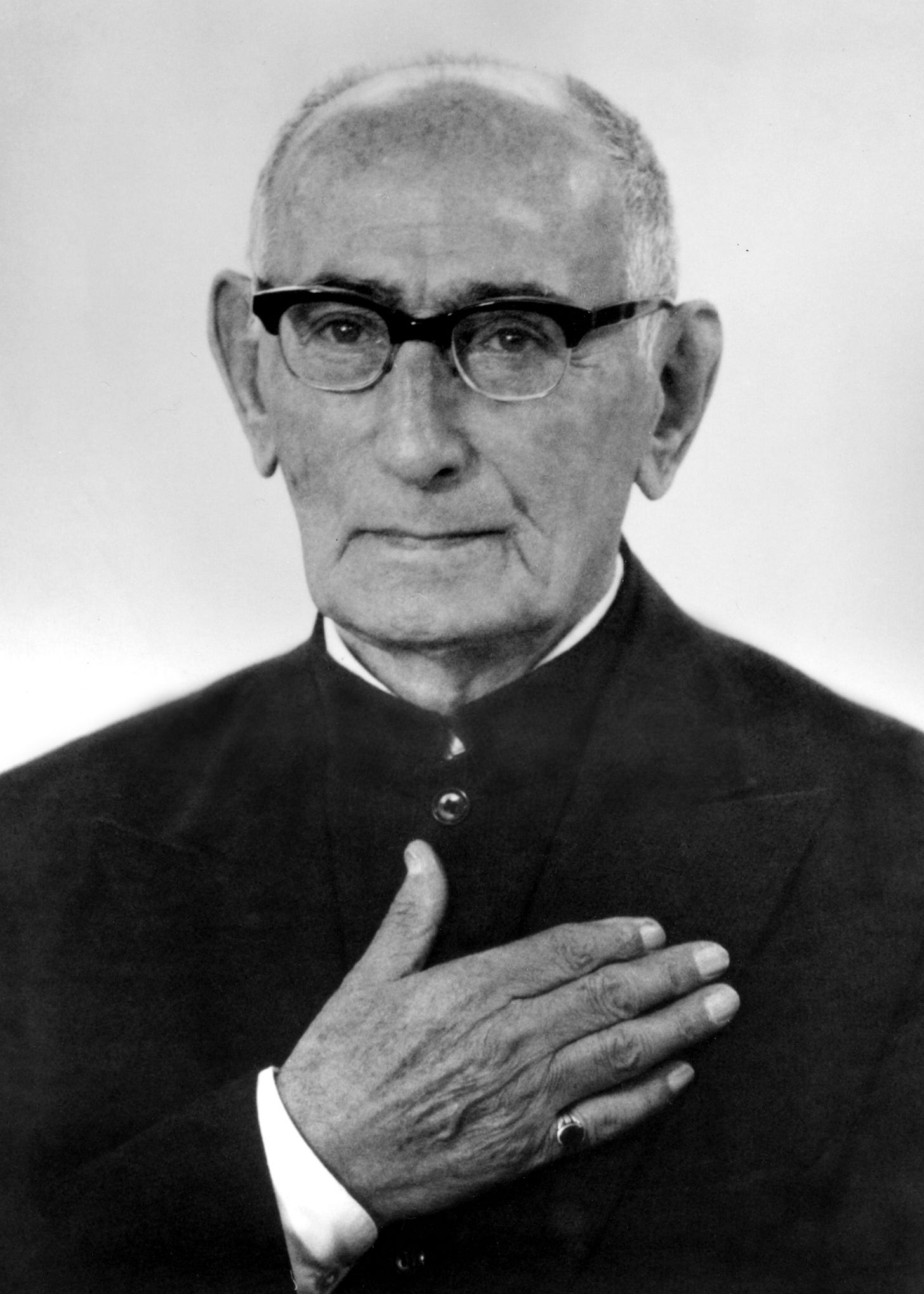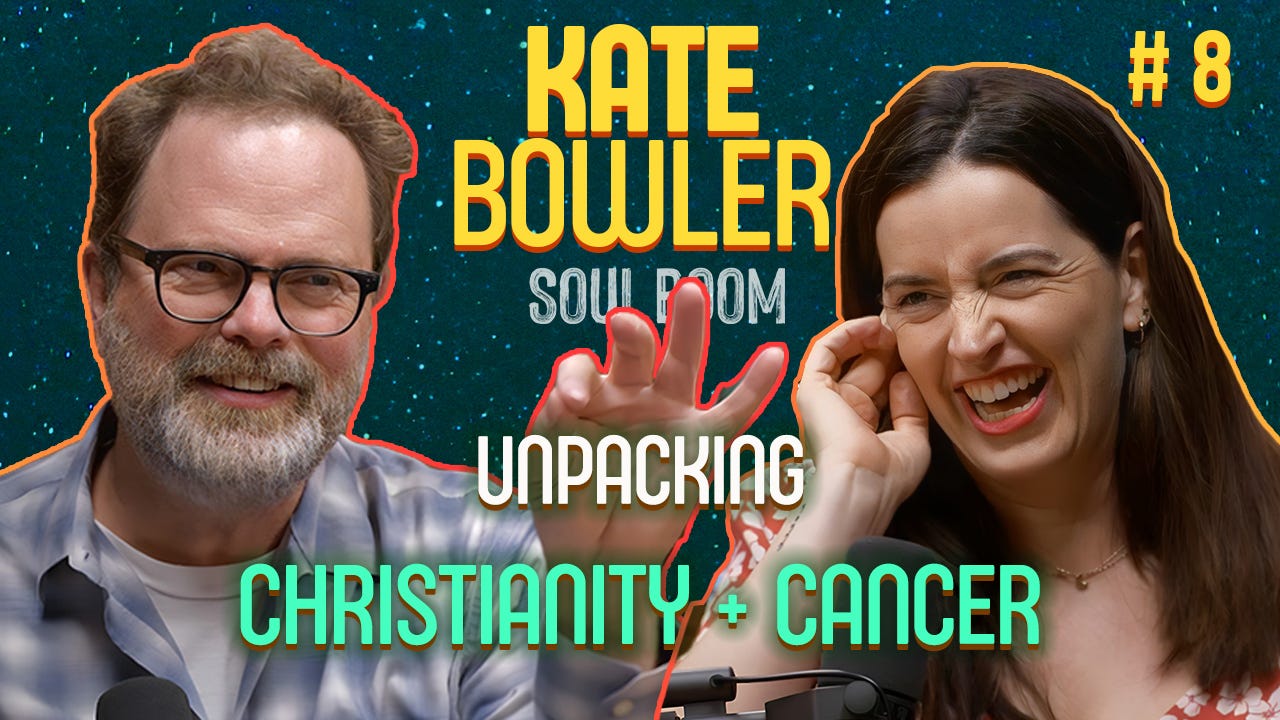Big Baby Meets Ancient Man
Plus, a visit from Kate Bowler!
Hey There Citizens of Soul Boom Land,
Our guest on this week’s Soul Boom podcast is Kate Bowler, the New York Times bestselling author, award-winning podcast host, and professor at Duke University. Known for her profound insights into the cultural narratives of success and suffering, Kate’s journey through her unexpected diagnosis of stage IV cancer at the age of 35 and her subsequent reflections have deeply resonated with many.
As a lifelong Christian and professor of religious history, she is very candid about her connection to Christ—not in any kind of weird, imposing way—just very sweet and transparent. Hearing her talk about Jesus made me think more deeply about the figure of Jesus… And also the Prophet-Founder of my very own Bahá’í Faith… Bahá’u’lláh … and that one time I met him.
I know what you’re thinking. “Rainn, you were born in 1966. He passed away in 1892. How could you possibly have met Bahá’u’lláh?”
OK, you got me. But I kinda sorta did!
Let me set the scene:
It is the late 1960s, and I am but an enormous, white infant. Parents, grandparents, and baby Rainn are in tow at Seattle’s Sea-Tac airport. We are there to greet a renowned Bahá'í named Ṭaráẓu’lláh Samandari. This revered, beloved, and ancient man had, as a teenager, spent time with Bahá'u'lláh in 1892—incidentally, the same year Bahá’u’lláh passed away.
He was known as “Hand of the Cause Ṭaráẓu’lláh Samandari” and was notably slight, probably around five feet tall. At nine months, I likely dwarfed him in size. Ṭaráẓu’lláh Samandari, dressed in a long black robe, had a small radiant face that beamed with light. Supposedly, he held me briefly in his frail, ancient Persian arms right there at the Sea-Tac arrivals terminal and kissed me on my enormous, bald, baby head.
This was during the advent of the hippie days. My young Bahá'í father and mother lived in a big bohemian house near the University of Washington in 1967. They hosted informal gatherings, called “firesides,” where people interested in the Bahá'í Faith could learn more. At one of these gatherings, Samandari spoke about his time with Bahá'u'lláh.
I’m a mere two degrees of separation from him. Can you imagine? For a Bahá'í, it’s mind-boggling. Our world-encompassing faith (over five million adherents in over 200 countries) is so new. I met a guy who met THE GUY.
It’s like a Christian in the year 120 AD meeting someone who knew the guy who catered the Last Supper. Or a Muslim in the early 8th century meeting someone who helped Mohammed tend to the sick in Medina. Think of it: two degrees of separation!
The early Bahá'í heroes, like Samandari, spread out across the globe after Bahá'u'lláh’s passing to share his message of peace, love, and unity.
Samandari was devoted, traveling the world in service to his Faith, through dozens of countries. He was self-educated, yet esteemed for his knowledge and humility. Renowned for his calligraphy, he was also known for teaching the Bahá'í Faith to jazz great Dizzy Gillespie out in Van Nuys, California.
His family was close to Bahá'u'lláh. His father was named one of Bahá'u'lláh’s nineteen original apostles. Their family name used to be Qazvini until Bahá'u'lláh gave his father the title “Samandar,” meaning Phoenix. Samandari’s first name, “Ṭaráẓu’lláh,” means “ornament of God.” Put it all together and you get “Hand of the Cause of God, Ornament of God… Phoenix.”
Abdu’l-Baha, the son of Bahá'u'lláh, referred to Samandari as “the Divine Adornment,” “a luminous candle,” “a cause of happiness of souls.” Shoghi Effendi, the great-grandson of Bahá'u'lláh, honored him as “An Apostle of the Crimson Ark,” “a strong Pillar of the Luminous Faith of God,” and “a shining lamp among Bahá'í Teachers.” You get the idea. People really revered him.
In the Pacific Northwest in 1967, in a big house near the university filled with bohemian students and spiritual seekers, this tiny man, “strong pillar of the luminous faith of God,” spoke to a crowd.
My parents probably passed out cookies and punch to students in John Lennon glasses, leather vests, and bell-bottomed jeans. I imagine ashtrays everywhere, and I’m on a blanket in the corner, sucking on a rubber toy in a cloud of second-hand smoke. This was only months before my parents would divorce, my mom would take off to live on a commune in Oakland, and my dad would take me to live in the jungles of coastal Nicaragua to start an oyster farm.
My uncle Ronnie wasn’t a Bahá'í then. Unbeknownst to my parents, he was probably dealing pot and acid at our house that night. He told me years later that Bahá'í firesides were perfect cover for dealing drugs. “Swing by, say some prayers, and get some groovy religious wisdom. Afterward, I’ll meet you on the porch with a baggie of the finest herb north of Humboldt and a fistful of Orange Windowpane,” he would say.
Back then, many spiritual truth seekers hung out together. Exploring alternative spiritual life and the soul’s journey was integral to the counterculture springing up in American cities, preceding the “Summer of Love.”
During that era, tens of thousands of young Americans joined the Bahá'í Faith. Including my parents: my dad, an artist and writer, and my mom, an experimental theater actress and yoga teacher.
This was the milieu I grew up in. LONG spiritual discussions in our living room until the wee hours. Sufis, Buddhists, Jehovah’s Witnesses, Sikhs, agnostics, and seekers exploring life’s biggest questions. Meditation, poetry, dancing, fire, drumming, fasting, chanting, community, and service. It all comes back to that one old man who had once been in the presence of Bahá'u'lláh.
One incident from that night stands out. My father used to tell the story about an especially patchouli-soaked fellow with dirty blonde tresses and bare feet who sat on the floor. This young hippie was a regular at this and other local spiritual events. When it came time for questions, he raised his hand and asked Mr. Samandari a question.
“Hey maaan, I’m just wondering, what will the world be like in the future?”
He listened with his usual gentle deference. Then, Mr. ‘Ornament-of-God-Phoenix,’ his face beaming, reached his arms out, palms down.
“Today,” he said, “the world is like this.”
He then turned his hands over, his palms now facing up. “Tomorrow? It will be like this.”
The room went silent. The attendees drank in the simplicity and profundity of that statement.
And there I was, an enormous baby, blissfully ignorant of the momentous occasion. As I grew older, however, hearing that story over and over again was like a seed sown and nourished in my heart. Perhaps there were periods where that seed laid dormant, but nonetheless it was always there. In some ways my adult pursuit of spirituality can be traced back it. Have you ever had an encounter with someone who deeply influenced your spiritual journey? I would love to see your stories in the comments.
PS: We’re just scratching the surface here. If you want to dive deeper, buy the Soul Boom book. And if you’d like more Kate Bowler and her irreverent, hard-won observations on mortality and the ways it has taught her to live, then get yourself a copy of Everything Happens for a Reason or follow her on Instagram.





I am excited for this one ❤️❤️❤️